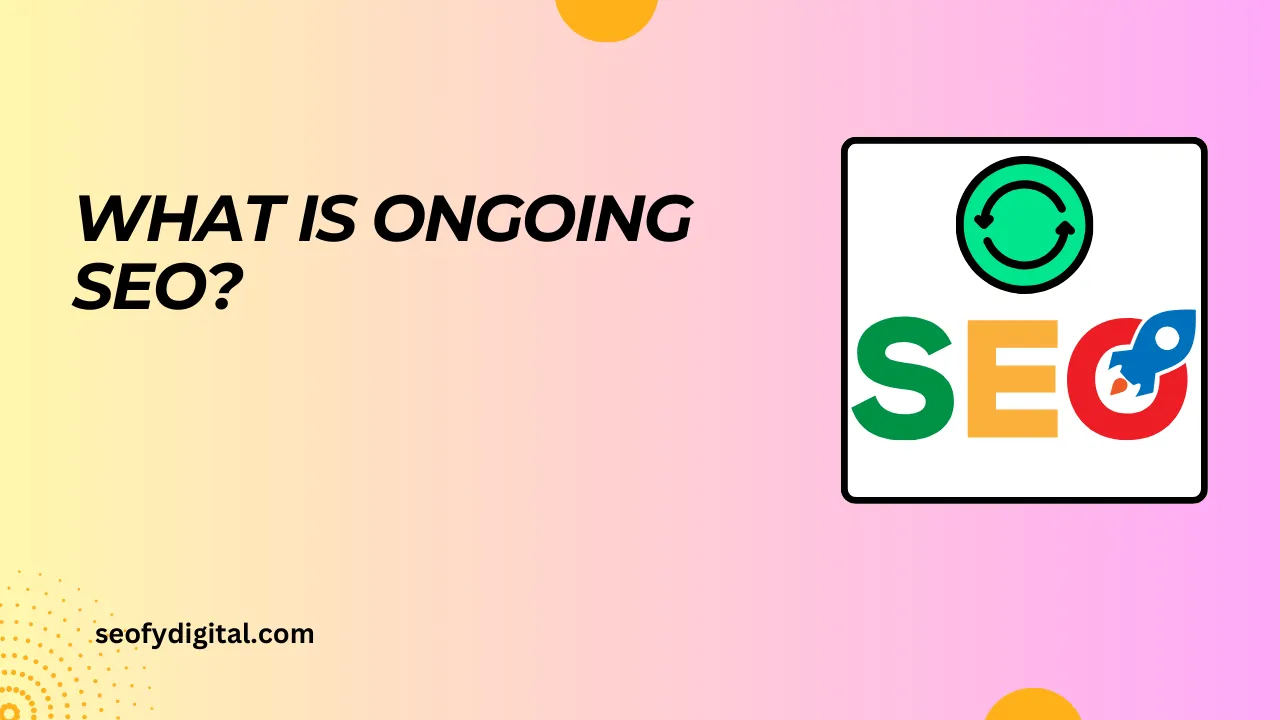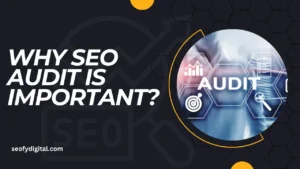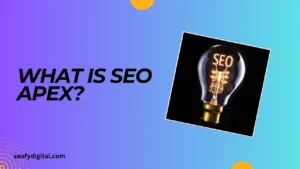In the digital world, SEO (Search Engine Optimization) plays a crucial role in how websites are discovered by audiences. But many business owners and marketers overlook one key truth: SEO isn’t just a one-time job.
Launching a site or applying basic SEO tactics once won’t keep it relevant in the long term. Search engines constantly update their algorithms, and what ranks well today may fall behind tomorrow. This is where ongoing SEO comes into play.
Ongoing SEO is the commitment to continuously optimize your website. Imagine your website as a thriving garden – without regular care, it won’t flourish. The same is true for SEO. You need to continually refine your content, keywords, and technical aspects to keep up with competitors, stay relevant to search engines, and maintain your rankings.
This sustained effort is what truly leads to better visibility, more organic traffic, and higher conversions. In this post, we’ll explore why ongoing SEO is essential and how it can help your website grow in the long run.
We’ll dive into the core principles of SEO, outline the steps involved in ongoing SEO, and clarify some common misconceptions. By the end, you’ll understand why ongoing SEO is a must for any website aiming for sustainable success.

Contents
The Core Principles of SEO
1. On-Page SEO
On-page SEO involves optimizing elements directly on your website. These elements help search engines understand what your pages are about and ensure they’re relevant for target keywords. Key aspects include:
- Keyword Research and Optimization: Discovering relevant keywords and using them naturally within your content helps align your website with users’ search intent.
- High-Quality Content Creation: Google favors websites with valuable, engaging content. Consistently producing informative and high-quality content positions your site as an authority in your field.
- Meta Tags and Descriptions: These brief descriptions appear on search results pages. Optimizing meta titles and descriptions can improve click-through rates by showing users how your content meets their needs.
- Header Tags (H1, H2, H3, etc.): Using headers to structure your content makes it easier to read and signals content hierarchy to search engines.
- Image Optimization and URL Structure: Ensuring images are compressed and labeled with alt text, and using clean, descriptive URLs makes your site more accessible and search-friendly.
2. Off-Page SEO
Off-page SEO builds credibility and trust for your website by enhancing its presence outside your site. Major components include:
- Backlink Building Strategies: Acquiring high-quality backlinks from reputable sites increases your site’s authority and search engine credibility.
- Social Media Marketing: Sharing content on social media platforms can drive traffic and improve brand recognition.
- Local SEO: Optimizing for local searches, such as Google My Business listings, helps connect with nearby customers and drive local traffic.
- Brand Mentions and Reviews: Positive reviews and mentions across the web can strengthen your reputation and boost your SEO.
3. Technical SEO
Technical SEO focuses on optimizing your website’s infrastructure, so it loads quickly, is easy to navigate, and meets the standards that search engines set. Essential elements include:
- Website Speed Optimization: Page speed is a ranking factor. Fast-loading pages improve user experience and reduce bounce rates.
- Mobile Friendliness: Ensuring that your site is mobile-friendly is critical, as mobile traffic accounts for more than half of all web traffic.
- XML Sitemaps and Robots.txt: These elements guide search engines on which pages to crawl and index, helping them better understand your site’s layout.
- 404 Error Pages: A functional 404 page with helpful links improves user experience when visitors land on missing pages.

Why Ongoing SEO Matters
Increased Organic Traffic
A well-maintained SEO strategy gradually boosts your organic traffic. By refining your keyword strategy, content quality, and user experience, you’re likely to see a steady flow of visitors over time. Consistent updates signal to search engines that your site is active, which encourages them to rank it higher.
Improved Search Engine Rankings
SEO isn’t static – it requires consistent optimization to hold or improve rankings. Algorithms frequently change, and ongoing SEO helps your site stay adaptable to these shifts, maintaining its position among competitors.
Enhanced Brand Visibility
An optimized site increases your brand’s presence on search engines, which leads to greater awareness. As people find your website in relevant searches, they’re more likely to recognize and remember your brand.
Higher Conversion Rates
Ongoing SEO improves conversion rates by targeting relevant audiences with high-quality content. When visitors find exactly what they’re looking for, they’re more likely to convert into customers or subscribers.
Long-Term ROI
SEO is a long-term investment, and ongoing efforts yield lasting benefits. Although it takes time, the results are often worth the investment because they provide sustained visibility, traffic, and revenue growth.
The Ongoing SEO Process
Keyword Research and Analysis
Keyword research is a foundational part of SEO, but it’s not something you do only once. Tracking your keyword rankings and refining your list ensures that you’re targeting terms with current relevance and potential for growth.
As new keywords emerge in your industry, adding them to your strategy helps capture additional traffic.
Content Creation and Optimization
Regularly creating fresh, high-quality content that aligns with user intent is essential. Updating existing content keeps it relevant, allowing it to continue attracting visitors. Additionally, a content calendar ensures you’re producing new material on a consistent basis.
Technical SEO
Maintaining your site’s speed, mobile-friendliness, and accessibility is an ongoing effort. Regular technical audits can help identify issues that may arise with time, ensuring that your site remains functional and user-friendly.
Link Building
Building and monitoring high-quality backlinks is vital for long-term success. Link-building should be part of a continuous effort to attract reputable sources to link back to your content. Additionally, it’s important to monitor and disavow any toxic links that could harm your SEO.
Analytics and Reporting
Tracking website performance through analytics is crucial for understanding what works and what doesn’t. Using data-driven insights, you can make strategic adjustments to your SEO strategy. Regular reports on metrics like traffic, bounce rate, and conversions provide a clear view of ongoing SEO’s impact.
Common SEO Myths Debunked
Myth 1: SEO Brings Instant Results
SEO is often misunderstood as a quick fix, but it’s a long-term process. Results appear gradually and improve with consistent efforts.
Myth 2: SEO Is Only About Keywords
While keywords are essential, SEO is holistic and includes content quality, site structure, and backlinks.
Myth 3: Backlinks Are the Only Thing That Matters
Backlinks are critical, but technical SEO, content relevance, and user experience are equally crucial in ranking well.
Myth 4: SEO Is Too Expensive
While SEO requires an investment, the long-term ROI often outweighs the costs as it provides lasting traffic and brand visibility.
The Future of Ongoing SEO
The future of SEO is dynamic, influenced by new technologies and evolving user expectations. Key areas of development include:
- Voice Search Optimization: As more users rely on voice-activated devices, optimizing for voice search phrases becomes essential.
- Artificial Intelligence and Machine Learning: Search engines use AI to understand content better, making it crucial to create engaging, high-quality content that resonates with users.
- Core Web Vitals: These metrics, which measure user experience aspects like loading speed and interactivity, are gaining importance as ranking factors.
- Evolving Search Algorithms: With search engines regularly updating algorithms, ongoing SEO helps sites stay aligned with changes to maintain rankings.
Conclusion
Ongoing SEO is essential for maintaining and improving a website’s online presence. Search engines prioritize fresh, relevant, and user-friendly sites, so continuous optimization is the best way to stay competitive.
By investing in ongoing SEO, you not only improve your site’s visibility but also drive higher engagement and conversions over time. Take control of your website’s future by keeping your SEO strategy active and adaptable to changes.
FAQs
1. What is ongoing SEO?
Ongoing SEO involves continual optimization to maintain a website’s performance in search rankings.
2. Why is SEO not a one-time effort?
Search engines frequently update their algorithms, so regular optimization is necessary to stay visible.
3. How often should SEO be updated?
Regular updates, at least monthly or quarterly, keep your site aligned with search engine changes.
4. Can ongoing SEO improve conversions?
Yes, by targeting relevant keywords, ongoing SEO attracts high-quality traffic, increasing conversions.
5. Is ongoing SEO expensive?
It requires an investment, but the long-term ROI often justifies the costs.
6. Does SEO cover content updates?
Yes, updating content to keep it relevant is a core part of ongoing SEO.








